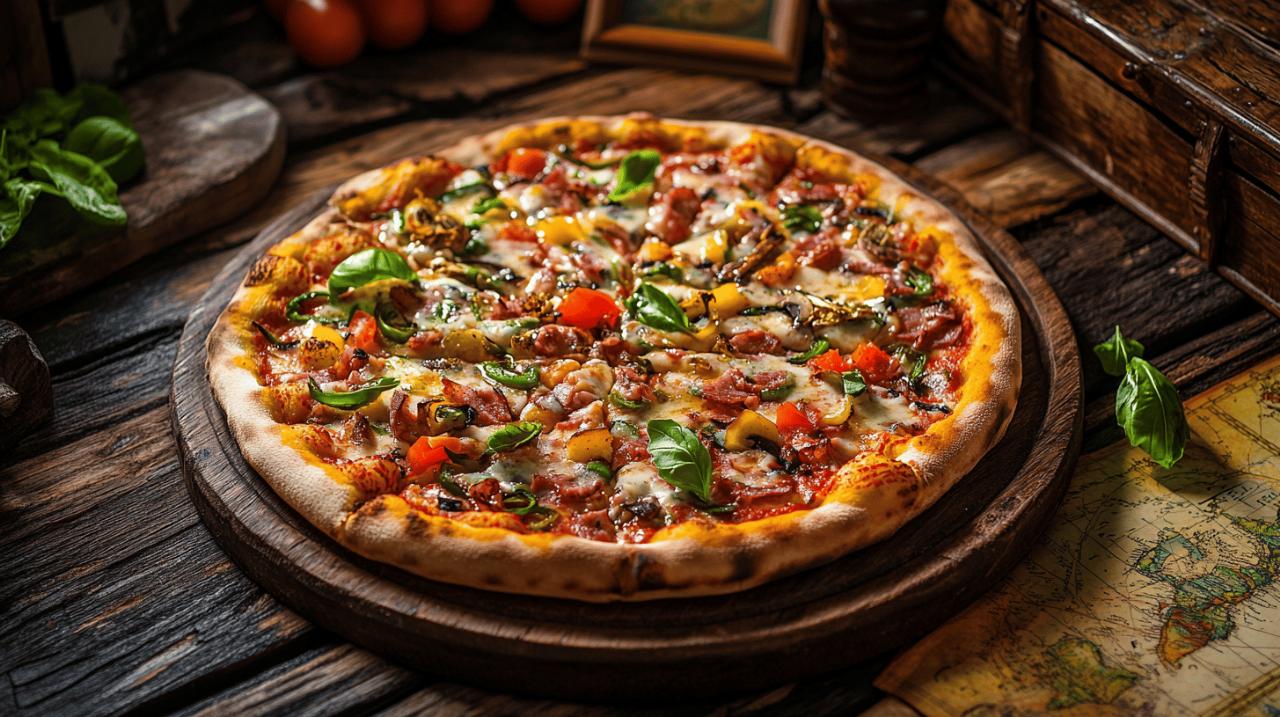For those eager to embark on a sensory adventure without booking a flight, the culinary treasures of the ancient Silk Road now grace the streets of Britain's towns and cities. From the aromatic pilaf of Samarkand to the intricate mezze platters of Turkey, a wealth of ethnic dining establishments offer a passport to distant lands, all within a few minutes' walk from home. This modern gastronomic phenomenon reflects centuries of cultural exchange, echoing the spirit of traders and travellers who once journeyed through Uzbekistan, passing through the timeless cities of Bukhara and Khiva, carrying spices, silks, and stories across continents.
Tracing the Flavours of the Silk Road: A Global Menu on Your Doorstep
Ancient trade routes meet modern high streets: the heritage behind your meal
The Silk Road was far more than a route for merchants; it was a conduit for the mingling of Parthian, Hellenistic, and Islamic cultures, weaving together traditions from East and West. Today, the legacy of this grand cultural journey lives on in the kitchens of ethnic eateries scattered across British high streets. These establishments bring the essence of historic cities such as Samarkand, where turquoise domes and mosaic madrasahs still stand as monuments to a glorious past, directly to diners seeking authenticity and adventure. The influence of figures like Timur, the fourteenth-century conqueror known as Tamberlaine, resonates through the dishes that celebrate bold flavours and time-honoured cooking techniques. Every plate tells a story, connecting modern food enthusiasts to a world where spice caravans traversed deserts and mountain passes, leaving behind a culinary legacy that continues to evolve and inspire.
From uzbek pilaf to turkish mezze: exploring authentic silk road cuisine locally
Uzbek cuisine, with its hearty and aromatic offerings, stands as a testament to the rich agricultural and pastoral traditions of Central Asia. Plov, the beloved Uzbek pilaf, is a dish that transforms simple ingredients such as rice, lamb, carrots, and onions into a feast that embodies communal dining and celebration. Variants like Fergana pilaf showcase regional distinctions, each with its own balance of spices and textures, inviting diners to explore the nuances of a single dish across different locales. Alongside pilaf, samsa pastries and freshly baked Samarkand bread offer a glimpse into the daily life of Uzbekistan's bustling bazaars and family gatherings. Turkish mezze, on the other hand, presents a mosaic of small plates that encourage sharing and conversation, blending influences from Mediterranean, Middle Eastern, and Balkan cuisines. These dishes, found in restaurants that pride themselves on authenticity, allow patrons to experience the warmth and hospitality that define Silk Road dining, all without leaving the comfort of their own town.
Catering to every palate: inclusive dining across ethnic eateries
Plant-Based Adventures: Veggie and Vegan Delights from Around the Globe
The growing demand for plant-based options has encouraged ethnic restaurants to showcase the vegetarian and vegan treasures hidden within their culinary traditions. Many cuisines along the Silk Road naturally feature an abundance of vegetables, pulses, and grains, making them ideal for those seeking meat-free meals without sacrificing depth of flavour. Turkish mezze platters, for instance, often include dishes such as hummus, baba ghanoush, and stuffed vine leaves, which are both satisfying and entirely plant-based. Central Asian fare also offers delicious vegetable-centric options, from hearty stews laden with root vegetables to fragrant rice dishes adorned with dried fruits and nuts. These offerings reflect a broader trend in British dining, where inclusivity and dietary diversity are no longer afterthoughts but central to the culinary experience. By celebrating the natural bounty of the regions they represent, ethnic eateries demonstrate that veggie and vegan dining can be as bold, exciting, and culturally rich as any meat-based meal.
Gluten-free global grub: navigating dietary needs without compromising flavour
For diners with gluten sensitivities or coeliac disease, the prospect of exploring ethnic cuisine might seem daunting, yet many traditional dishes are naturally gluten-free or can be adapted with ease. Rice-based meals, such as pilaf, form the backbone of numerous Silk Road cuisines, offering a safe and delicious foundation for those avoiding wheat. Similarly, many Middle Eastern and Central Asian dishes rely on chickpea flour, cornmeal, or rice flour, ensuring that gluten-free patrons can enjoy a full spectrum of flavours and textures. Restaurants that understand the importance of catering to diverse dietary needs often go the extra mile, training staff to guide diners through menus and highlight suitable options. This commitment to inclusivity not only broadens the appeal of ethnic dining but also reinforces the idea that food should be a source of joy and connection, regardless of dietary restrictions. By embracing gluten-free offerings, these establishments ensure that everyone can partake in the culinary journey without compromise.
Beyond the Restaurant Table: Immersive Culinary Experiences in the City
Street Food Vans and Pop-Ups: Bringing Authentic International Bites to Your Borough
 The vibrant world of street food has exploded across British cities, transforming car parks, market squares, and festivals into open-air dining halls brimming with global flavours. Mobile vendors and pop-up stalls offer a more casual and spontaneous way to experience ethnic cuisine, often serving dishes that are quick to prepare yet deeply rooted in tradition. These street food entrepreneurs frequently draw inspiration from their own heritage, presenting family recipes and regional specialities that might not appear on a traditional restaurant menu. Whether it is a steaming bowl of Uzbek pilaf served from a food van or Turkish kebabs grilled to perfection at a weekend market, these experiences bring the spirit of the Silk Road directly to the people. The informal setting encourages interaction and storytelling, with vendors eager to share the origins of their dishes and the memories tied to each recipe. This dynamic food culture not only diversifies the culinary landscape but also makes authentic international cuisine accessible to a wider audience, breaking down barriers and inviting everyone to explore new tastes.
The vibrant world of street food has exploded across British cities, transforming car parks, market squares, and festivals into open-air dining halls brimming with global flavours. Mobile vendors and pop-up stalls offer a more casual and spontaneous way to experience ethnic cuisine, often serving dishes that are quick to prepare yet deeply rooted in tradition. These street food entrepreneurs frequently draw inspiration from their own heritage, presenting family recipes and regional specialities that might not appear on a traditional restaurant menu. Whether it is a steaming bowl of Uzbek pilaf served from a food van or Turkish kebabs grilled to perfection at a weekend market, these experiences bring the spirit of the Silk Road directly to the people. The informal setting encourages interaction and storytelling, with vendors eager to share the origins of their dishes and the memories tied to each recipe. This dynamic food culture not only diversifies the culinary landscape but also makes authentic international cuisine accessible to a wider audience, breaking down barriers and inviting everyone to explore new tastes.
Hands-on cookery workshops: mastering traditional techniques from far-flung lands
For those who wish to delve deeper into the culinary traditions of the Silk Road, hands-on cookery workshops offer an invaluable opportunity to learn directly from skilled chefs and artisans. These classes, often held in community centres, ethnic restaurants, or dedicated cooking schools, cover everything from mastering the art of pilaf making to the delicate craft of shaping samsa pastries. Participants gain insight into the cultural significance of each dish, discovering how ingredients are sourced, prepared, and combined to create flavours that have been cherished for generations. Workshops might also explore traditional crafts such as knife chasing or ceramics, drawing parallels between the creativity involved in cooking and other artisan practices. The experience of kneading dough, toasting spices, and assembling complex layers of flavour fosters a deeper appreciation for the skill and patience required in ethnic cooking. Beyond the recipes themselves, these workshops build community, connecting food enthusiasts with diverse backgrounds and creating a shared space for learning and celebration. By bringing these techniques into their own kitchens, participants carry forward the legacy of the Silk Road, ensuring that these culinary traditions continue to thrive and evolve.
Supporting local: how ethnic dining champions british producers and community
Sourcing Locally, Cooking Globally: The Marriage of British Produce and International Recipes
One of the most exciting developments in the ethnic dining scene is the thoughtful integration of locally sourced British produce into traditional recipes from around the world. Chefs who run these establishments often forge relationships with nearby farms, butchers, and greengrocers, selecting seasonal vegetables, meats, and dairy products that meet the high standards of their culinary heritage. This approach not only supports local producers but also reduces food miles and promotes sustainability, aligning with broader environmental goals. The marriage of British produce and international recipes results in dishes that honour tradition while embracing the unique qualities of regional ingredients. A pilaf might feature lamb from a nearby farm, carrots from a local market garden, and rice imported from Central Asia, creating a fusion that respects both the origins of the dish and the landscape in which it is now enjoyed. This practice demonstrates that ethnic dining is not about rigid adherence to a single way of doing things but rather a dynamic dialogue between cultures, ingredients, and communities.
Building Bridges Through Food: The Social and Economic Impact of Ethnic Eateries
Ethnic restaurants and food businesses play a vital role in the social fabric of British towns and cities, serving as gathering places where diverse communities come together to share meals, stories, and traditions. These establishments often provide employment opportunities for immigrants and second-generation Britons, helping to build economic stability and foster a sense of belonging. By celebrating the culinary heritage of their homelands, owners and chefs contribute to a richer, more inclusive food culture that benefits everyone. The presence of ethnic eateries on the high street also encourages cultural exchange and understanding, inviting diners to step outside their comfort zones and explore unfamiliar flavours. This openness to new experiences can break down prejudices and build connections, reminding us that food is one of the most powerful tools for bringing people together. As these businesses thrive, they reinvest in their communities, supporting local suppliers, sponsoring events, and contributing to the vibrancy and diversity of the urban landscape. In this way, ethnic dining is not just about the food on the plate; it is about building bridges, celebrating heritage, and creating a more connected and compassionate society.




















